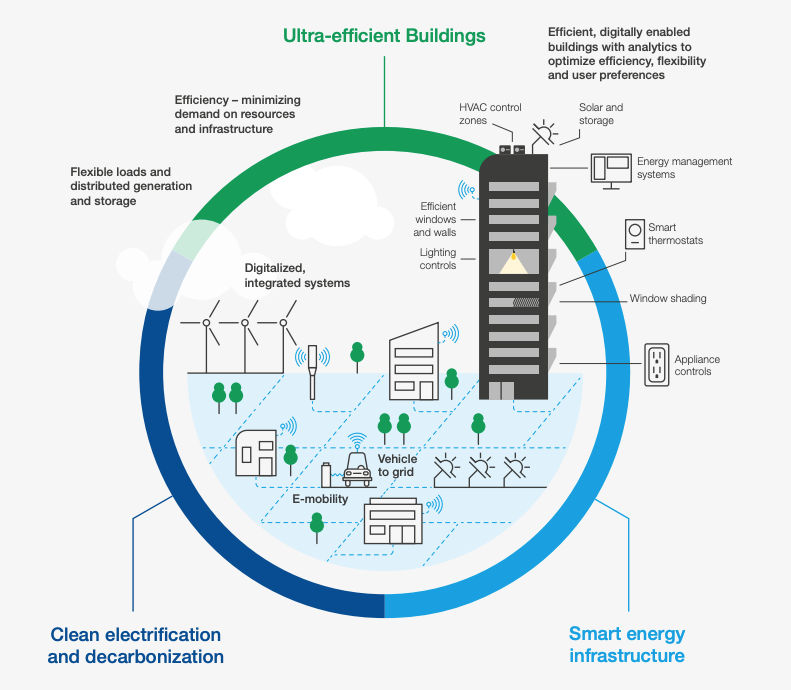5 ways giant termite mounds can help architects create more efficient and sustainable buildings
Solutions for more efficient and sustainable urban buildings are being explored.
Image: Unsplash/Ingeborg Korme
- Termite mounds and other natural solutions can inspire humans to build smarter, less energy-intensive buildings.
- Mounds are constructed to be resilient, sustainable and have built-in natural ventilation systems to keep the interior cool.
- The World Economic Forum's Nature Positive: Guidelines for the Transition in Cities explores how cities can build sustainable and resilient environments.
Externally, the towering mounds constructed by termites might not look like engineering wonders, but these complex structures can inspire today’s architects to design more efficient and sustainable homes and workplaces.
Hive – or rather mound – mentality sees thousands of termites working in unison to construct these durable, protective structures that have sophisticated cooling and ventilation systems built-in.
Carbon dioxide emissions from operating the world’s buildings reached 9.8 gigatonnes in 2022, which must be approximately halved by 2030 under the International Energy Agency’s (IEA) Net Zero by 2050 scenario.
Today’s architects can use biomimicry or bio-inspired designs to absorb lessons from nature for human engineering and design.
Here are a few of the applications and inspirations humans can take from the way termites engineer their mounds.
1. Natural ventilation
Termite mound construction promotes natural air circulation, which has inspired architects and engineers to design buildings that keep their cool in high temperatures without installing mechanical air conditioning.
Natural solutions like this make buildings more energy-efficient and reduce energy-related emissions.
2. Self-cooling buildings
Extending the benefits of natural ventilation, termite mound design principles have been applied to create buildings that can self-regulate their internal temperature.
The Eastgate Centre in Harare, Zimbabwe is a good example. Inspired by termite mound design, the building incorporates a passive cooling system that uses 90% less energy than conventional buildings of a similar size.
3. Sustainable construction
Although sustainability may not be the main driver behind termites' use of readily available resources when building their mounds, this approach is more efficient and expends less energy than using resources from further afield.
The same principle applies to the use of locally-sourced, sustainable building materials in human society, which reduces the environmental impact associated with transportation and manufacturing.
4. Resilient structures
Although termites are tiny insects, the mounds they build often tower many metres high and some can last for up to 100 years, which demonstrates the scale and strength of this engineering feat.
The strength and resilience of termite mounds can inform human construction techniques, helping to create buildings and structures that are better able to withstand tremors, earthquakes and other natural disasters.
5. Decentralized systems
Termite engineering involves thousands, if not millions, of individual insects working together for the good of the colony.
It is their organized behaviour that enables them to build complex structures without central control – which could inspire human systems and algorithms for distributed control in robotics and artificial intelligence.
What is the Forum doing to help cities to reach a net-zero carbon future?
Mounds of inspiration
Situated on the banks of Lake Turkana, the design of the ICT training centre is dominated by three tall, terracotta-coloured ventilation towers, emulating the termite mounds that dot the area.

The towers are built using local stone finished with concrete plaster. They are designed to passively cool the building’s interior by drawing warm air upwards, allowing fresh air to enter through an adjustable low-level opening. It’s a technique called the stack effect, which mirrors the natural ventilation system found in termite mound construction.
As the world’s cities are home to an increasing majority of the global population, it is vital that new solutions are developed to improve life for people in urban areas. To this end, the World Economic Forum's Nature Positive: Guidelines for the Transition in Cities explores how local leaders can develop a nature strategy that is both nature-positive, but also achieves cities' economic and social potential.
By understanding the secrets of how termites build their giant mounds, and other lessons from nature, humans can develop new methods and strategies to positively rethink the buildings of tomorrow.
Accept our marketing cookies to access this content.
These cookies are currently disabled in your browser.
Don't miss any update on this topic
Create a free account and access your personalized content collection with our latest publications and analyses.
License and Republishing
World Economic Forum articles may be republished in accordance with the Creative Commons Attribution-NonCommercial-NoDerivatives 4.0 International Public License, and in accordance with our Terms of Use.
The views expressed in this article are those of the author alone and not the World Economic Forum.
Related topics:
Forum Stories newsletter
Bringing you weekly curated insights and analysis on the global issues that matter.
More on Climate ActionSee all
Lee Poh Seng and Heng Wang
May 12, 2025
Jean-Claude Burgelman and Lily Linke
May 9, 2025
Tejashree Joshi
May 8, 2025




